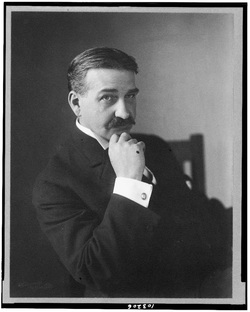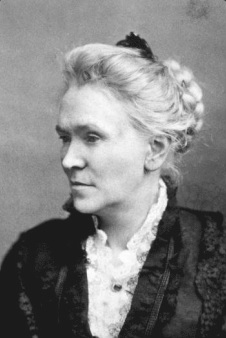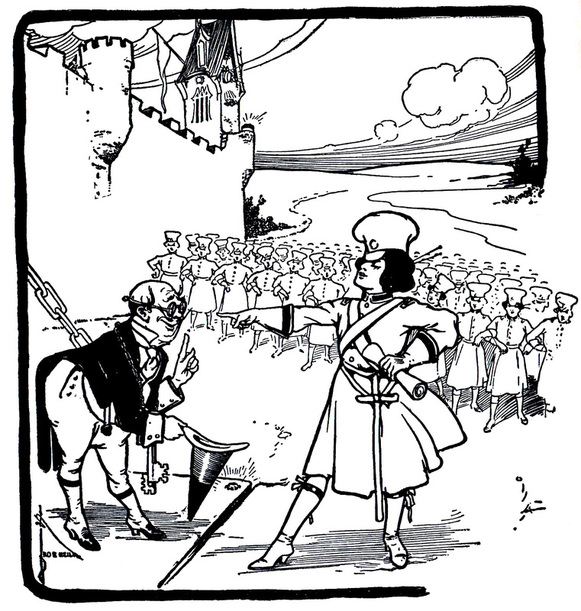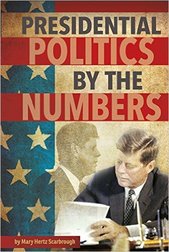
But we’ve had our moments of excitement. Who would guess that South Dakota’s woman suffrage history is rich? I mean RICH, a downright mother lode. You know that Pat Benatar song, Love is a Battlefield? Love’s got nothing on the suffrage battlefield of South Dakota. Verstehen Sie?*
[*German for “Do you understand?” It’s a clue about why winning the vote for women was such a long slog here – a topic for another time.]
Suffrage hotbed that South Dakota was, in 1890, a 70-year-old Susan B. Anthony crisscrossed the state campaigning for suffrage for six months. Six months! A few of the things she put up with: blistering heat during a dusty, drought-plagued summer, buggy conditions (both the insect variety and also the transportation variety – not comfy), hostile crowds, political infighting, and pinching babies (they pinched her, not the other way around).
Despite SBA’s efforts and those of many other local and national campaigners, the good (white male) voters of South Dakota* defeated the measure. This loss constituted good practice for failures that would be repeated in 1894, 1898, 1910, 1914, and 1916.
[*These white male voters were citizens of the state, but not necessarily American citizens. They were voting legally, believe it or not.]
Enough background. Let’s get back to my original tantalizing (I hope) headline question: How are suffrage, South Dakota, and The Wizard of Oz connected?
Somewhere along the spectrum of common knowledge and obscure fact is this nugget: Oz author L. Frank Baum lived in Aberdeen, South Dakota, from September 1888 through April 1891 (it was still Dakota Territory when he moved here).
Around the time South Dakota became a state – November 1889 – Baum began to publish the Aberdeen Saturday Pioneer. He was an outspoken advocate for women’s suffrage and repeatedly said so in the pages of the newspaper. Baum was also an officer in the Aberdeen Equal Rights Society.
I’m not sure if he had already come to his suffrage beliefs by the time he met his future wife, Maud Gage, or whether the beliefs followed. You see, Baum’s mother-in-law was Matilda Joslyn Gage, a nationally renowned suffrage leader. Gage campaigned in South Dakota in 1890, and in fact lived with her daughter and son-in-law from time to time.
Gage may not be a household name these days, but she should be; in addition to being a suffragist, she was an active abolitionist who offered her home as a stop on the Underground Railroad. Gloria Steinem has described her as “the woman who was ahead of the women who were ahead of their time.” Wow. Like Mr. Slinger in the Lily’s Purple Plastic Purse, that’s about all I can say. Wow.

The second book in the Oz series, The Marvelous Land of Oz, introduces General Jinjur, a girl who commands the Army of Revolt, an all-girl army who wish to seize the throne of Oz, “because the Emerald City has been ruled by men long enough, for one reason.”
When the soldiers arrived at the gates of the city, Jinjur told the Guardian of the Gates, “We mean to conquer the Emerald City!”
He responded, “What a nonsensical idea! Go home to your mothers, my good girls, and milk the cows and bake the bread.”
Needless to say, the “good girls” didn’t listen. Jinjur and her soldiers quickly captured the Emerald City “without a drop of blood being spilled,” and “the Army of Revolt [became] an Army of Conquerors.
If only it had been that easy for Gage, Susan B. Anthony, and the many tireless local suffragists in South Dakota!
Baum's photo: Library of Congress; Photo by Dana Hull, 1908; https://lccn.loc.gov/91732241
Gage's photo: Public domain; https://commons.wikimedia.org/wiki/File%3AMatildaJoslynGage.jpeg
Did you know of the connection between Baum suffrage? Let me know what you think.


 RSS Feed
RSS Feed